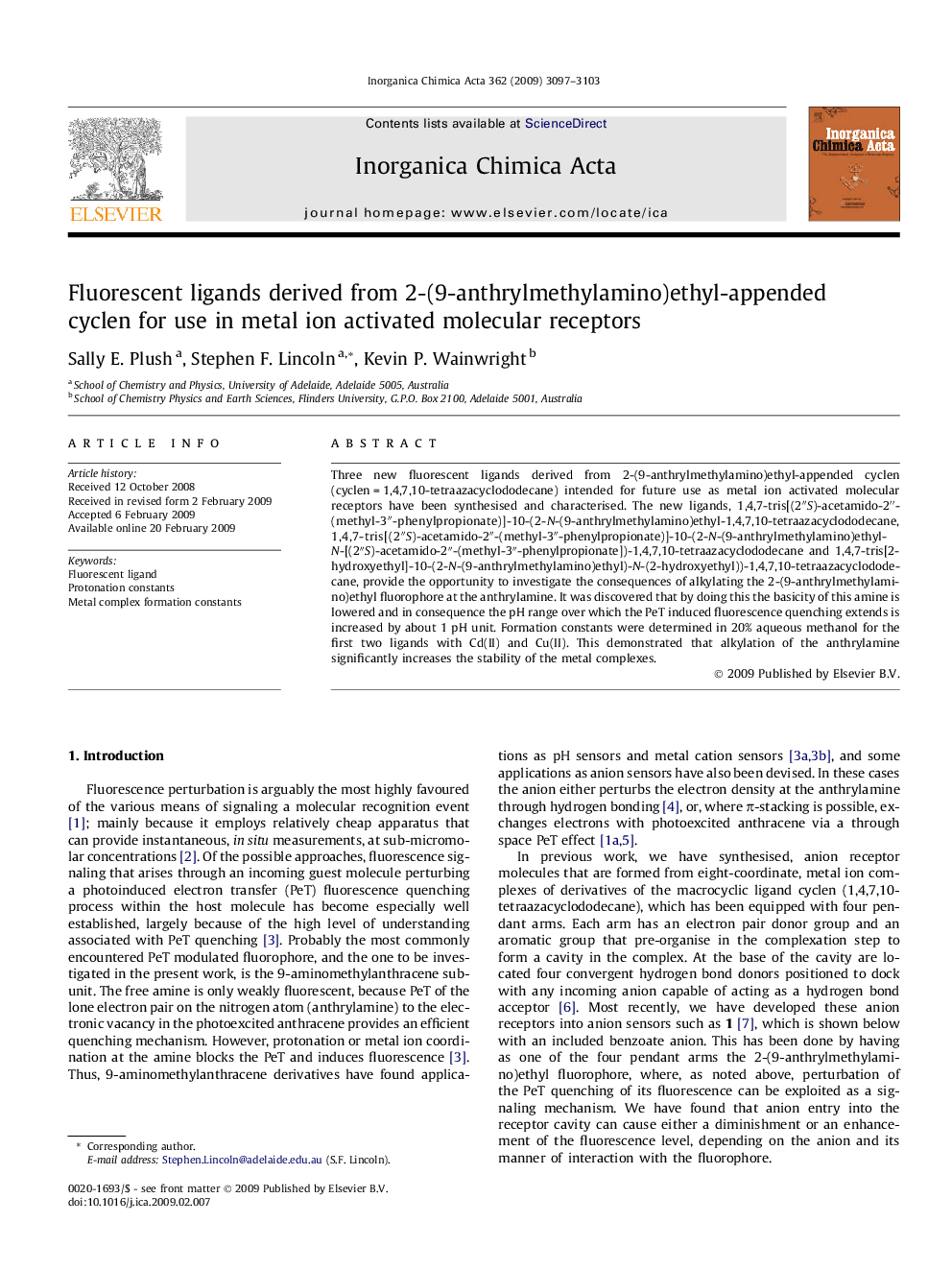| Article ID | Journal | Published Year | Pages | File Type |
|---|---|---|---|---|
| 1308484 | Inorganica Chimica Acta | 2009 | 7 Pages |
Three new fluorescent ligands derived from 2-(9-anthrylmethylamino)ethyl-appended cyclen (cyclen = 1,4,7,10-tetraazacyclododecane) intended for future use as metal ion activated molecular receptors have been synthesised and characterised. The new ligands, 1,4,7-tris[(2″S)-acetamido-2″-(methyl-3″-phenylpropionate)]-10-(2-N-(9-anthrylmethylamino)ethyl-1,4,7,10-tetraazacyclododecane, 1,4,7-tris[(2″S)-acetamido-2″-(methyl-3″-phenylpropionate)]-10-(2-N-(9-anthrylmethylamino)ethyl-N-[(2″S)-acetamido-2″-(methyl-3″-phenylpropionate])-1,4,7,10-tetraazacyclododecane and 1,4,7-tris[2-hydroxyethyl]-10-(2-N-(9-anthrylmethylamino)ethyl)-N-(2-hydroxyethyl))-1,4,7,10-tetraazacyclododecane, provide the opportunity to investigate the consequences of alkylating the 2-(9-anthrylmethylamino)ethyl fluorophore at the anthrylamine. It was discovered that by doing this the basicity of this amine is lowered and in consequence the pH range over which the PeT induced fluorescence quenching extends is increased by about 1 pH unit. Formation constants were determined in 20% aqueous methanol for the first two ligands with Cd(II) and Cu(II). This demonstrated that alkylation of the anthrylamine significantly increases the stability of the metal complexes.
Graphical abstractInvestigations of fluorescent ligands derived from 2-(9-anthrylmethylamino)ethyl-appended cyclen show that alkylation of the anthrylamine increases metal complex stability and broadens the pH range in which PeT quenching occurs.Figure optionsDownload full-size imageDownload as PowerPoint slide
